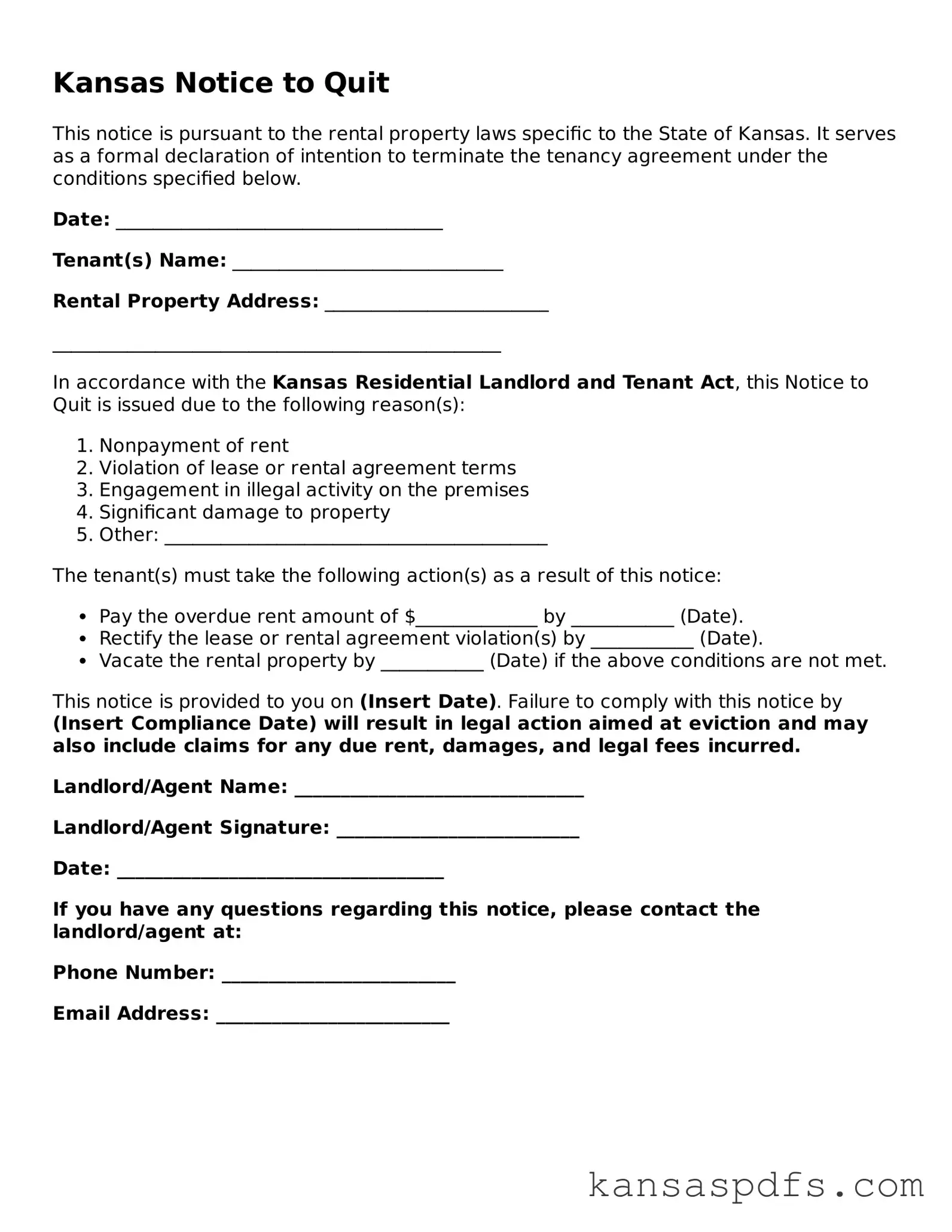Kansas Notice to Quit
This notice is pursuant to the rental property laws specific to the State of Kansas. It serves as a formal declaration of intention to terminate the tenancy agreement under the conditions specified below.
Date: ___________________________________
Tenant(s) Name: _____________________________
Rental Property Address: ________________________
________________________________________________
In accordance with the Kansas Residential Landlord and Tenant Act, this Notice to Quit is issued due to the following reason(s):
- Nonpayment of rent
- Violation of lease or rental agreement terms
- Engagement in illegal activity on the premises
- Significant damage to property
- Other: _________________________________________
The tenant(s) must take the following action(s) as a result of this notice:
- Pay the overdue rent amount of $_____________ by ___________ (Date).
- Rectify the lease or rental agreement violation(s) by ___________ (Date).
- Vacate the rental property by ___________ (Date) if the above conditions are not met.
This notice is provided to you on (Insert Date). Failure to comply with this notice by (Insert Compliance Date) will result in legal action aimed at eviction and may also include claims for any due rent, damages, and legal fees incurred.
Landlord/Agent Name: _______________________________
Landlord/Agent Signature: __________________________
Date: ___________________________________
If you have any questions regarding this notice, please contact the landlord/agent at:
Phone Number: _________________________
Email Address: _________________________
